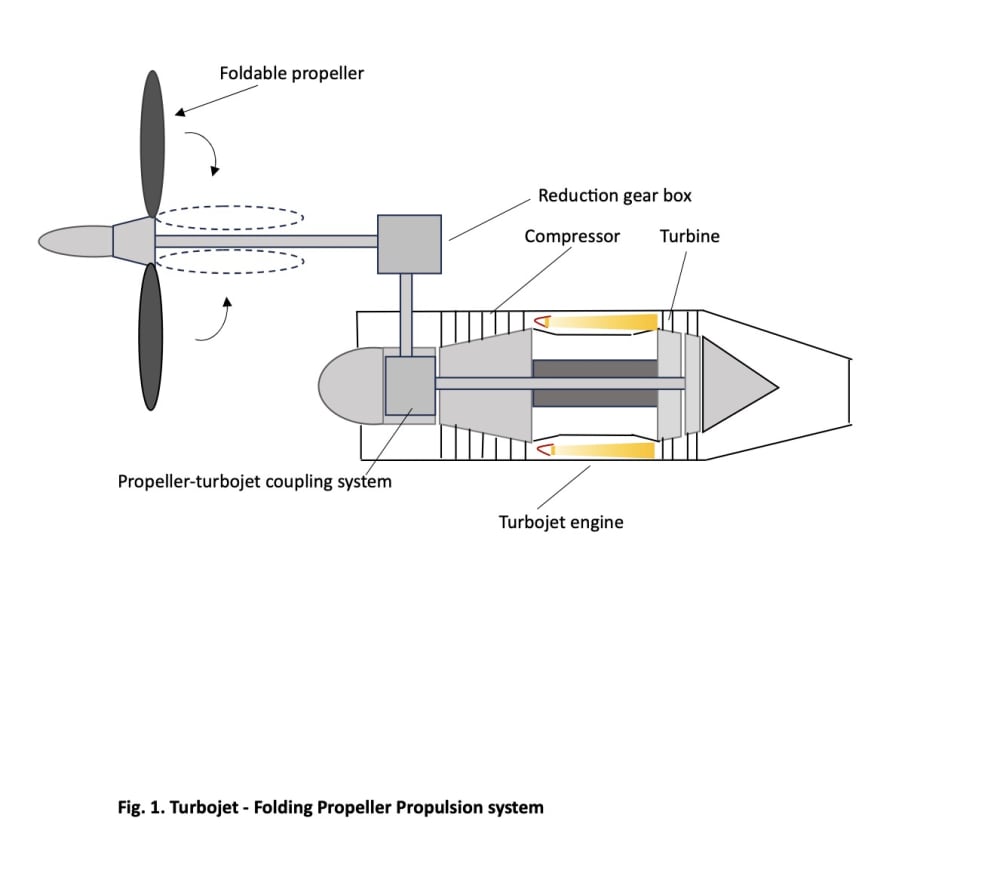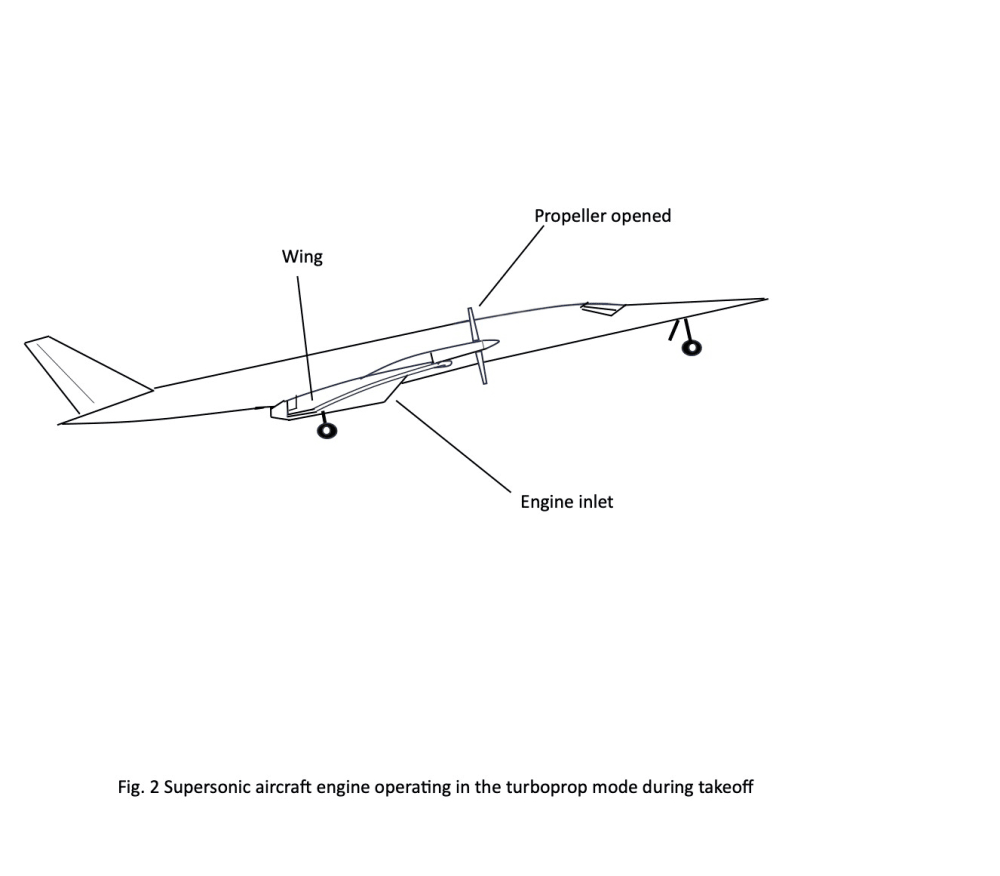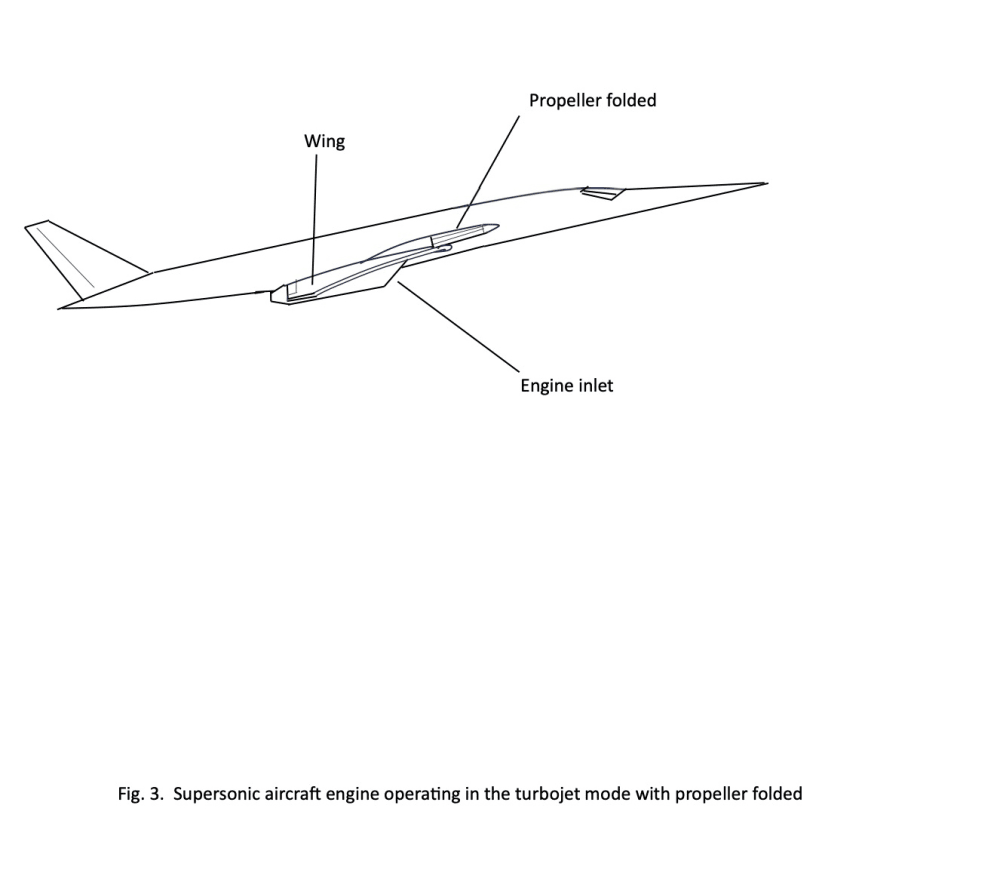SUPERSONIC AIRCRAFT PROPULSION PROBLEM
A major challenge confronting the development of supersonic passenger aircraft is the need for a propulsion system which can:
- meet the current stringent stage 5 noise requirements during takeoff and landing;
- operate efficiently at subsonic and supersonic speeds.
THE PROPOSED PROPULSION SYSTEM
A new propulsion system is being presented to address this issue. It involves a folding propeller which can be coupled to a turbojet engine (fig 1). During takeoff and landing, the propeller is coupled to the turbojet engine making the propulsion system to operate as a turboprop (fig 2). This leads to the conformity with the low noise requirements as well as fuel savings at low speeds.
At a suitable altitude, the propeller is folded and decoupled from the turbojet engine. The propulsion system therefore operates in the turbojet mode (fig 3). At such high altitude, the noise from the turbojet will be low and acceptable.
ADVANTAGES
- Extensive research and development (R&D) is not expected as the system involves just the coupling of a folding propeller to a turbojet.
- Lower cost compared to the low and medium bypass turbofans currently under development for supersonic aircraft which requires extensive R&D.
- Relatively short runway requirement due to turboprop mode of operation during takeoff.
- Relatively low drag of engine due to the use of folding propeller and turbojet leading to fuel savings.
- High propulsive efficiency at takeoff speeds up to mid subsonic speeds due to the use of propeller leading to fuel savings.
- The high propulsive efficiency at supersonic speeds due to the use of turbojet.
MARKET
- The market value of supersonic transport is estimated to be about $35 billion in 2030, which is expected to increase beyond 2030. (Sources; Market and Market, Fortune Business Insights)
- This is due to the existence of high niche market involving wealthy individuals, corporate executives, governments, military, etc., seeking to reduce their travelling time.
- There exist lucrative over-water flight routes despite the overland supersonic flight restrictions due to sonic boom concerns. This includes;
i. Flights from eastern part of US to parts of Europe including UK, France and Netherlands.
ii. Western corridor flights from western part of US to East Asia including Japan, South Korea and parts of China. - Highspeed subsonic overland flights are also possible.
CONCLUSION
The development of this propulsion system with relatively low cost and environmental impact is therefore expected to make the reintroduction of supersonic transport a reality.
Like this entry?
-
About the Entrant
- Name:Isaac Ennison
- Type of entry:individual
- Patent status:none








